Cryptocurrency
Europe Officially Approves MiCA Crypto Regulation Rules

Cryptocurrencies have gained immense popularity in recent years, revolutionizing the financial landscape. However, due to their decentralized nature, concerns about consumer protection, market stability, and regulatory oversight have emerged. To address these concerns, the European Union (EU) has officially approved the Markets in Crypto Assets (MiCA) regulation rules, aimed at establishing a comprehensive framework for the regulation of virtual assets and related services. Let’s delve into the details of MiCA and understand its significance for the crypto industry.
Introduction
The MiCA regulation, approved by the European Parliament and Council, aims to create a harmonized legal framework for cryptocurrencies and related activities across the EU member states. It seeks to strike a balance between fostering innovation and safeguarding the interests of consumers and investors. By providing legal certainty and transparency, MiCA aims to establish a robust foundation for the development and growth of the European digital finance market.
What is MiCA Crypto Regulation?
MiCA stands for Markets in Crypto Assets, and it is a regulatory framework that covers various aspects of cryptocurrencies, including issuance, custody, trading, and service provision. It applies to both cryptocurrencies that are not classified as financial instruments (e.g., Bitcoin and Ethereum) and those that are (e.g., security tokens). The regulation aims to ensure that all market participants comply with the same set of rules, creating a level playing field and fostering consumer trust.
Why was MiCA Crypto Regulation introduced?
The introduction of MiCA regulation was prompted by the need to address the regulatory challenges associated with cryptocurrencies. Before its implementation, the crypto industry lacked a consistent and harmonized regulatory approach across the EU. This regulatory fragmentation hindered innovation, limited investor protection, and raised concerns about money laundering, terrorist financing, and market abuse. MiCA seeks to overcome these challenges and create a safe and transparent environment for the crypto market.
Key Features of MiCA Crypto Regulation
4.1. Definition of Virtual Assets
MiCA provides a clear definition of virtual assets, which encompasses various types of cryptocurrencies, including utility tokens, payment tokens, and security tokens. By defining virtual assets, the regulation establishes a common understanding and framework for their treatment.
4.2. Authorization and Registration Requirements
Under MiCA, crypto-asset service providers, such as crypto exchanges and wallet providers, are required to obtain authorization from their national competent authority. The authorization process ensures that these service providers meet specific regulatory requirements, including robust governance arrangements, capital adequacy, and cybersecurity measures.
4.3. Custody and Asset Protection
MiCA introduces rules regarding custody services for virtual assets. Custody providers need to meet stringent requirements to ensure the safekeeping of client assets, including proper segregation and protection measures. These provisions enhance investor protection and reduce the risk of theft or loss of virtual assets.
MiCA places a strong emphasis on investor protection. It introduces rules to ensure transparency and disclosure of information to investors, enabling them to make informed decisions. These measures include providing clear and accurate information about the risks associated with virtual assets and ensuring that investors have access to adequate complaints and dispute resolution mechanisms.
4.5. Market Integrity and Transparency
To promote market integrity and transparency, MiCA establishes rules for crypto-asset issuers and trading platforms. It requires issuers to provide comprehensive information about their virtual assets, including whitepapers and periodic financial reports. Trading platforms must comply with rules related to market abuse, insider trading, and manipulation, ensuring fair and orderly trading.
4.6. Cross-Border Operations
MiCA aims to facilitate cross-border operations within the EU by establishing a single passport for crypto-asset service providers. Once authorized in one member state, service providers can operate in other member states without the need for additional authorizations. This streamlines the process for businesses and encourages cross-border competition.
4.7. Regulatory Compliance and Supervision
MiCA introduces a robust regulatory framework for the supervision and enforcement of crypto-asset activities. National competent authorities are responsible for supervising authorized crypto-asset service providers and ensuring their compliance with MiCA’s provisions. Additionally, a new European Supervisory Authority will be established to coordinate supervision at the EU level.
Impact of MiCA Crypto Regulation on the Crypto Industry
The approval of MiCA regulation is expected to have significant implications for the crypto industry within the European Union. Let’s explore some of the key impacts:
5.1. Increased Investor Confidence
The introduction of a comprehensive regulatory framework instills confidence among investors. Clear rules and investor protection measures reduce the perceived risks associated with virtual assets, making them more attractive to a broader range of investors. This increased confidence can lead to greater participation and investment in the crypto market.
5.2. Enhanced Market Stability
MiCA regulation aims to address concerns related to market stability by introducing rules to prevent market abuse, manipulation, and insider trading. These measures promote fair and transparent trading practices, ensuring a more stable and reliable crypto market environment.
5.3. Expansion of the Crypto Market
By providing legal certainty and harmonized regulations, MiCA paves the way for the expansion of the crypto market. It encourages innovation and fosters the development of new crypto-asset services and products. This expansion can attract new businesses, create job opportunities, and contribute to economic growth within the EU.
5.4. Potential Challenges and Concerns
While MiCA regulation brings several benefits, there are also potential challenges and concerns. Compliance with the regulatory requirements may pose a burden, especially for smaller businesses and startups. Additionally, striking the right balance between regulation and fostering innovation remains a continuous challenge to ensure the competitiveness of the European crypto industry.
Implementation and Timelines
The implementation of MiCA regulation will occur in several phases. The regulation provides a transitional period for existing crypto-asset service providers to obtain the necessary authorizations and comply with the new rules. It also allows for further guidance and technical standards to be developed to facilitate its implementation effectively.
Conclusion
The official approval of MiCA Crypto Regulation marks a significant milestone in the development of a comprehensive regulatory framework for cryptocurrencies in Europe. The regulation aims to balance consumer protection, market stability, and innovation, providing legal certainty and transparency to the crypto industry. It is expected to enhance investor confidence, promote market integrity, and foster the expansion of the crypto market within the European Union.
Cryptocurrency
XRP: Transforming Transactions with Ripple’s Revolution

In digital transactions, Ripple (XRP) has emerged as a groundbreaking cryptocurrency with a distinctive approach that sets it apart from the crowd. As the digital era continues to redefine how financial transactions are conducted, Ripple has positioned itself as a formidable player with innovative solutions that promise to reshape the future of digital payments. This article will discuss the unique attributes and approaches that make ripple (XRP) stand out in digital transactions.
Decentralisation with a Purpose
Unlike many other cryptocurrencies, Ripple embraces a level of centralisation with a specific purpose. It aims to facilitate fast and efficient cross-border payments and transfers for financial institutions like banks and payment providers. By maintaining a degree of control, it can ensure the security and reliability of its network while facilitating seamless global transactions.
RippleNet: A Global Network of Partners
At the heart of this approach is RippleNet, a global network that connects various financial institutions worldwide. RippleNet is the infrastructure enabling these institutions to exchange value, making cross-border payments faster, more cost-effective, and transparent. This extensive network of partners contributes to the uniqueness of digital transactions.
XRP: The Digital Asset Bridging Currencies
XRP, the native cryptocurrency of the Ripple network, plays a pivotal role in facilitating cross-border transactions. It acts as a bridge between different fiat currencies, allowing for near-instantaneous value transfer. XRP’s speed and liquidity make it an ideal choice for financial institutions seeking to streamline international payments.
Consensus Algorithm for Efficiency
Ripple employs a consensus algorithm known as the XRP Ledger Consensus Protocol (XRP LCP). This algorithm eliminates the need for energy-intensive mining and dramatically reduces transaction confirmation times. The result is a more energy-efficient and eco-friendly approach to digital transactions, aligning with the growing demand for sustainable blockchain solutions.
Regulatory Compliance and Certainty
Ripple places a strong emphasis on regulatory compliance and certainty. By working closely with regulatory bodies and adhering to legal frameworks, Ripple gives financial institutions the confidence to adopt its technology for cross-border payments. This commitment to compliance sets it apart from many other cryptocurrencies.
Real-Time Settlements
One of the most compelling features is its ability to settle transactions in real time. Traditional cross-border payments can take processing days, leading to delays and uncertainty. Ripple’s technology allows instant settlement, providing financial institutions and their customers with speed and efficiency previously unattainable in cross-border transactions.
Transparency and Traceability
Ripple’s blockchain technology offers a high degree of transparency and traceability. Every transaction on the Ripple network is recorded on an immutable ledger, providing a comprehensive history of all XRP movements. This transparency enhances security and builds trust among financial institutions and their customers.
Accessibility for All
While its primary focus is on serving financial institutions, its technology is accessible to individuals and businesses as well. Ripple’s commitment to financial inclusion ensures its unique approach to digital transactions benefits a wide range of users, from multinational corporations to everyday consumers.
Driving Innovation in Finance
This unique approach to digital transactions extends beyond cross-border payments. It serves as a catalyst for innovation in the financial industry. By challenging traditional banking systems and payment methods, Ripple encourages financial institutions to adapt and evolve, ultimately improving the financial services offered to consumers.
The Future of Digital Transactions
As the digital era continues to reshape how we conduct financial transactions, Ripple stands at the forefront, offering a unique and innovative approach to digital payments. With a commitment to speed, efficiency, transparency, and regulatory compliance, Ripple (XRP) is poised to play a pivotal role in shaping the future of digital transactions, both for financial institutions and individual users.
In conclusion, the distinctive approach of ripple (XRP) to digital transactions sets it apart as a transformative force in finance. With a global network of partners, a unique digital asset in XRP, and a commitment to efficiency and compliance, Ripple is redefining how financial institutions and individuals conduct cross-border payments and transfers.
Cryptocurrency
Unveiling BlackRock’s Strategic Dive into Cryptocurrencies

BlackRock, the global financial juggernaut, has set the stage for a monumental shift in the financial landscape with its persistent pursuit of exposure to cryptocurrencies, particularly Bitcoin and Ethereum. At the forefront of this transformative journey is BlackRock’s audacious application for a Bitcoin ETF in June. This move was not just a mere expression of interest; it served as a catalyst, sparking a market rally that echoed across the financial realm.
BlackRock’s Bold Application for a Bitcoin ETF
In June, BlackRock made headlines with its bold application for a Bitcoin ETF. This move wasn’t merely a speculative venture; it triggered a market response, indicating a substantial shift in the landscape of traditional finance. Despite the ongoing caution exercised by the Securities and Exchange Commission (SEC) in approving a Bitcoin ETF, BlackRock’s persistence and commitment have remained unwavering.
Ripple Effect on the Market
BlackRock’s foray into cryptocurrency reverberated across the market, prompting other major issuers like Fidelity Investments and Invesco to follow suit. The anticipation and speculation surrounding a potential Bitcoin ETF approval have injected renewed enthusiasm into the market, with investors closely watching regulatory developments.
Larry Fink’s Transformation into a Cryptocurrency Advocate
The transformation of its CEO, Larry Fink, adds a fascinating dimension to BlackRock’s cryptocurrency endeavors. Once skeptical of cryptocurrencies, Fink has become a vocal supporter of this digital asset class. This shift in perspective from a key figure in traditional finance signals a personal evolution and a broader acceptance of cryptocurrencies as a legitimate investment.
Leveraging CME CF Bitcoin Reference Rate
BlackRock’s recent initiative involves tracking Bitcoin prices using the CME CF Reference Rate. This meticulous approach to monitoring Bitcoin’s valuation reflects a commitment to ensuring accuracy and reliability in their cryptocurrency-related endeavors. It also establishes BlackRock as a data-driven player in the cryptocurrency space.
Ethereum’s Ether on BlackRock Radar
Not confining its focus to Bitcoin, BlackRock is concurrently planning an ETF for Ethereum’s ether (ETH). This dual-pronged approach underscores BlackRock’s comprehensive involvement in the cryptocurrency market. The move towards Ethereum, the second-largest cryptocurrency by market capitalization, suggests a nuanced strategy that extends beyond Bitcoin.
BlackRock Increasing Involvement Signals a Financial Landscape Shift
The amalgamation of BlackRock’s Bitcoin ETF application, tracking Bitcoin prices with the CME CF Bitcoin Reference Rate, and plans for an Ethereum ETF paints a picture of a financial giant deeply immersing itself in cryptocurrency. This multi-faceted approach signifies a potential shift in the financial landscape, with traditional asset managers embracing the digital future.
Conclusion
In conclusion, BlackRock’s proactive stance on Bitcoin and Ethereum, evidenced by its Bitcoin ETF application and meticulous tracking mechanisms, sends ripples through the financial industry. The transformation of Larry Fink from a skeptic to a supporter adds credibility to the growing acceptance of cryptocurrencies. As the landscape evolves, BlackRock stands at the forefront of this paradigm shift, indicating that the future of finance might be more digital than we previously imagined.
FAQs
Q: What prompted BlackRock’s interest in Bitcoin and Ethereum?
BlackRock interest in Bitcoin and Ethereum stems from a strategic vision to diversify its investment portfolio. The dynamic nature of cryptocurrencies and their growth potential align with BlackRock’s commitment to exploring innovative investment opportunities.
Q: How did BlackRock’s Bitcoin ETF application impact the market?
In June, BlackRock’s Bitcoin ETF application triggered a significant market rally. The anticipation and speculation surrounding the approval of a Bitcoin ETF created a ripple effect, influencing other major players in the financial sector to explore cryptocurrency-related initiatives.
Q: Why is Larry Fink, BlackRock’s CEO, now supporting cryptocurrencies?
Larry Fink’s shift from skepticism to support for cryptocurrencies reflects a broader evolution in the financial industry. As the landscape changes, Fink recognizes the potential of digital assets and their role in shaping the future of investments.
Q: How does BlackRock track Bitcoin prices, and why is it significant?
BlackRock tracks Bitcoin prices using the CME CF Bitcoin Reference Rate. This method ensures precision and reliability in valuation, highlighting BlackRock’s commitment to data-driven decision-making in the cryptocurrency space.
Q: What is the significance of BlackRock’s plan for an Ethereum ETF?
BlackRock plan for an Ethereum ETF indicates a broader approach to cryptocurrencies. Recognizing the diversity in the cryptocurrency landscape, BlackRock aims to position itself at the forefront of Bitcoin and Ethereum investments.
Cryptocurrency
Crypto News: Unveiling the Fascinating World of Cryptocurrencies

In today’s ever-evolving digital landscape, cryptocurrencies have taken the financial world by storm. This technological marvel, which began with the creation of Bitcoin in 2009, has sparked unprecedented interest and investment opportunities. The world of cryptocurrency is dynamic, filled with exciting developments, innovations, and market fluctuations. In this article, we’ll delve into the world of crypto news, providing you with a comprehensive overview of the latest trends, events, and updates within the cryptocurrency space.
Table of Contents
Understanding Crypto News: A Brief Overview
Before we dive into the latest news, let’s ensure we’re all on the same page regarding cryptocurrencies. Cryptocurrencies are digital or virtual currencies that use cryptography for security. They operate on decentralized technology known as blockchain, which is a distributed ledger that records all transactions across a network of computers. The most famous and pioneering cryptocurrency is Bitcoin, created by the mysterious Satoshi Nakamoto.

The Growth and Adoption of Crypto News
In the past few years, cryptocurrencies have experienced significant growth in popularity and adoption. As more individuals and institutions recognize their potential, this once-niche concept has transformed into a global financial phenomenon. The following are some key developments in the world of cryptocurrencies:
1. Bitcoin’s Resurgence
Bitcoin, the pioneer of cryptocurrencies, has regained the spotlight recently. Its price volatility and value have attracted investors, and it’s once again considered a digital store of value.
2. Altcoins and Their Rising Popularity
Altcoins, alternative cryptocurrencies to Bitcoin, have seen substantial growth in market capitalization. Coins like Ethereum, Ripple, and Litecoin are gaining traction, offering unique features and use cases.
3. Institutional Investment
Prominent financial institutions, including Tesla and PayPal, are increasingly integrating cryptocurrencies into their operations, endorsing their legitimacy.
4. NFT Mania
Non-fungible tokens (NFTs) have emerged as a unique application of blockchain technology, allowing the ownership and trading of digital assets, art, and collectibles. NFTs have made headlines with multi-million-dollar sales.
Crypto Regulations and Legal Developments
The regulatory landscape surrounding cryptocurrencies is continually evolving, with governments worldwide attempting to strike a balance between innovation and security. Some notable developments include:
1. Government Scrutiny
Governments are recognizing the need for regulation to prevent illicit activities such as money laundering. They are introducing frameworks to control cryptocurrency exchanges and trading.
2. Cryptocurrency Taxation
As cryptocurrencies gain traction, tax authorities are adapting to this new digital economy. Investors are now required to report their cryptocurrency holdings for tax purposes.
Security and Challenges
Despite their numerous advantages, cryptocurrencies also pose challenges, particularly in terms of security:
1. Hacks and Scams
The crypto space has witnessed several high-profile hacks and scams, raising concerns about the safety of digital assets.
2. Volatility
Cryptocurrencies are known for their price volatility. While it presents investment opportunities, it also carries significant risks.
DeFi and the Future of Finance
Decentralized Finance (DeFi) is another prominent development in the crypto world. DeFi platforms aim to replace traditional financial intermediaries, offering services like lending, borrowing, and trading, all powered by blockchain technology. The DeFi space is rapidly evolving, with new projects and platforms emerging regularly.
Conclusion
In conclusion, the world of cryptocurrencies is a dynamic and ever-changing landscape. From Bitcoin’s resurgence and the rise of altcoins to the boom in NFTs and DeFi, the cryptocurrency space is continually evolving. However, it’s essential to keep in mind the risks and challenges that come with this financial revolution. With governments addressing regulation and taxation, and institutional adoption on the rise, the future of cryptocurrencies remains intriguing and uncertain. Staying informed and vigilant in this space is crucial for anyone looking to participate in this digital financial frontier.

 Entertainment1 day ago
Entertainment1 day agoSandra Orlow: A Cultural Icon’s Life and Influence

 Finance4 weeks ago
Finance4 weeks ago5 Things to Know About Startup Loans

 Health2 weeks ago
Health2 weeks agoThe Subtle Ways Contraceptives Affect Women’s Emotions and Mental Health

 Tech2 days ago
Tech2 days agoInnovative Applications of Current Sense Transformers in Today’s Industries

 Tech2 hours ago
Tech2 hours agoEnsure Project Success with Expert Dedicated Teams










